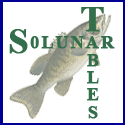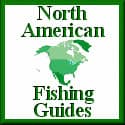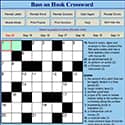Bass on Hook is Supported by our readers. As an Amazon Associate We earn commissions from qualifying purchases. For more informtion read our Amazon Affiliate Disclosure and Affiliate Disclosure Policies.
What To Do When It Goes Bad - Part 3 of 4
(Murphy's Law Re-Defined)
By Dennis Bryant "The Fishing Professor"
"QUICK, BASIC, REPAIRS TO DO BEFORE YOU HIT THE WATER"
(WITH SIMPLE-TOOLS USUALLY AT HAND)
Before we even start, a note to any skeptics and/or 'legal-eagles' that may be monitoring these pages.
Though possibly being totally argumentative to other individuals involved in the art of lure making, the following statements are my own personal practices and observations.
Each learned and perfected during the more than 30 years that I've practiced the art and participated in the professional side of the sport.
I am totally confident publicly sharing my personal points of view and with the product improvements produced as a result of these shared learning experiences.
I hope to continue for another 30 years to assist anglers of all expertise levels improve on their personal abilities and their own productivity in their chosen sport.
OK!
Enough said!
We now know what makes Spinnerbaits and Buzzbaits work and we also know what can go wrong with them.
Let's get to the BASICS and learn a couple of tricks on how to do simple repairs to them while we're on the water!
But let's begin at home first before we have to do it on the water through necessity.
Necessary Tools For Repairing Spinnerbaits And Buzzbaits:
Nothing in this tool list can even remotely be considered as a piece of high tech machinery.
1 pair - hands you are allowed to take off your gloves in the house
1 pair - eyes with the aid of corrective lenses if necessary
1 pair - needle-nosed pliers or a decent pair of fishing pliers
1 old ball-point-pen ink refill cartridge - empty is best, but any old one will do!
Since you're not on the water quite yet this is a great time to try these techniques out in the comfort of your own home, workshop or hobby room.
Or even your living room if your wife will let you bring your new combination 30-gallon possum-belly tackle box/insulated lunch box in there.
Okay Let's Get To Repairing Your Spinnerbaits and Buzzbaits
First thing to do is to gather up your collection of spinnerbaits and sharpen the hook on every last one of them!
Next: replace the skirts on those in desperate need of help.
Then: sort the spinnerbaits into two piles:
One pile with stainless steel shafts and the other with titanium shafts.
Inspect the ones that have titanium shafts and replace the blades if necessary and either return them to your tackle box or give them to the neighbor's kid to learn on.
New technology may sometimes be good, but that's not always true.
There is nothing that you can do (not at home nor in the field) to repair a titanium-shaft spinnerbait or buzzbait without the use of specialized tools (except for the possible replacement of a swivel, a blade or a skirt).
If you're intent on doing the following steps to Titanium - shafted baits check with your local medical supply house for titanium wire bending tools intended for the local dentist!
A Word Of Warning To The Wise:
NEVER purchase a spinnerbait or buzzbait that has a Titanium shaft (you know, I should leave it at that but I won't) from a neighborhood lure maker or a bargain-store.
Pre-formed titanium spinnerbait & buzzbait forms purchased by/for most of these individual sources may or may not be tempered at all, not in full or may be only in part of the form.
Most "Bargain-Barn" baits are made so that one shaft size fits all lures.
It just isn't so!
With so many blade and weight options available each one requires a specific setup in order to balance out correctly.
Why take a chance and lose that once in a lifetime fish!
OK, now that that's said we can finally get to work!
Next: one-by-one, place your already sharpened, newly re-skirted spinnerbaits and buzzbaits onto the ball-point-pen refill at the point where you would tie it to your line and examine each one individually as it hangs free (hook-point up, skirt hanging down).
In order to pass muster this time around all of the following tests have to be passed by each lure on its own merit.
Looking from the side of the lure, using the point where the pen cartridge is as point A, the body arm to the head and the blade arm to its swivel termination point should form an equilateral triangle (that's a triangle with three equal sides) with the hook in line with the "R" bend or tie-eye (whichever form is present on your lure).
To adjust: Grasp the tying point of the lure TIGHTLY with your pliers.
With your free hand either squeeze the shafts together or separate them until the triangle is formed.
This angle will probably be changed later in these steps, but is necessary right now in order to balance the lure correctly from this point on.
Looking from the front of the lure at the tying point and through the gap in your pliers where it's being held, the point and shank of the hook, the body wire to the head, the blade-arm to the swivel termination loop and the swivel termination-loop itself should all be inline with the flat of the inside edge of the pliers and on the same plane.
To adjust: Continue to hold the lure by the line-attachment point and bend the individual sections until all points align correctly.
Looking from the side of the lure, the end of the shaft that the blade(s) is/are attached to should not extend past the BARB on the hook when the two shafts are squeezed together.
To adjust: If the arm is shorter than the barb on the hook, no adjustment is necessary.
If it extends beyond the barb it is necessary to reduce the length of the arm to prevent the blade-arm from being a "hook-guard" rather than the "weed-guard" it was designed to be.
If the swivel terminal bend is simply a closed bend, just continue the bend to shorted the shaft.
If the bend is a "safety-pin closure" style use a pair of diagonal wire-cutters to remove the final bend of the closure.
Then just finish up as above until the arm is the correct length and does not extend beyond the barb of the hook when squeezed.
Looking from the side of the lure, the point of the hook must point directly at the barrel of the ink cartridge.
To adjust: CAUTION: IF the WEIGHT OF THE BLADES cause the blade shaft to hang below the hook bend, reduce the size of the blade(s) in use before continuing or the lure will never run true.
Hold the lure by the head (in front of that hook that you just sharpened) and bend the shaft in front of the head until the hook lines up properly.
BEND IN ONE MOTION ONLY!
This is and always has been the second weakest part of the lure.
Stay Tuned For The Next Episode
"Quick Basic Repairs On The Water"
(With The Same Simple Tools Used To Adjust Your Lures At Home)
GOOD FISHIN'!
Dennis Bryant
The Fishing Professor
Look for other articles written by Dennis Bryant in The Fishin Professor's Pro Staff Angler Profile










